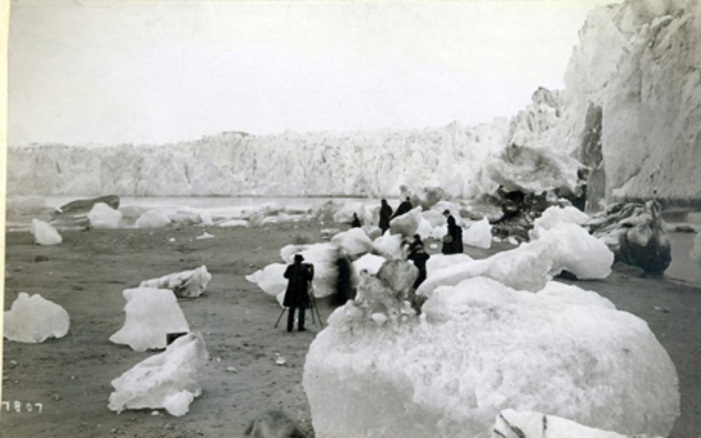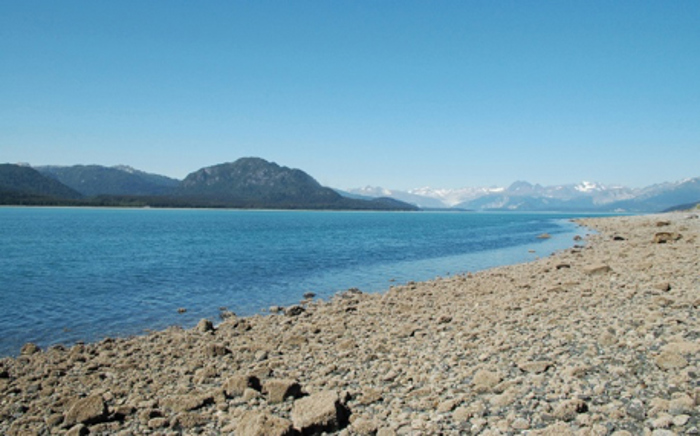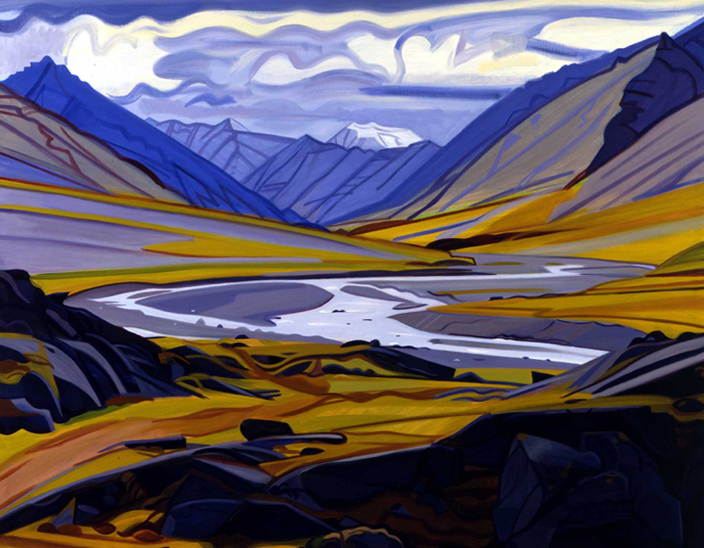
Looking at Art through the Lens of Change
By Grace Graham, Museum Educator
Thomas Hill produced many views of the California landscape, the Yosemite Valley, and the White Mountains of New Hampshire, where he sketched alongside members of the Hudson River School.
Naturalist John Muir, for whom the glacier was named*, commissioned Hill to paint Muir Glacier in 1889 because he thought Hill’s romantic style would offer a detailed and idealized portrayal of nature. Artists like Hill served as documentarians of Alaska landscapes at a specific moment in time. Hill could not have known at the time that he was capturing a specific view that would be lost within several decades.
Muir Glacier is rapidly receding. According to the National Snow and Ice Data Center, the glacier has receded over 7 miles in since the mid-20th century.


Amidst scientific measurements and data, artistic images can capture the powerful visual narrative of change. Works of art can help us understand aspects of experience and environment that might not be easily quantified.
Some of the changes we are seeing in Alaska’s tundra include melting permafrost, the invasion of new shrub species and the northward expansion of beavers, which can dramatically impact environments by reengineering the flow of creeks. Artists painting this landscape, such as painter David Mollett, record and represent the landscape with both detail and abstraction. Artists have long played an important role in understanding the natural world by capturing evocative experiences and providing a lens through which to view and consider environmental change.

Thomas Hill’s and David Mollett’s paintings are both currently on view in the museum’s the Art of the North galleries. These and other works provide views of past, contemporary and future landscapes.
Pictured: (top to bottom) Muir Glacier, Thomas Hill, 1889; Muir glacier in the 1880s and 2005 taken by the USGS; Carnivore Creek, David Mollet, 1989
*Muir Glacier is located in Glacier Bay, the traditional homeland of the Huna Tlingit people. They had many place names and stories for this region long before John Muir explored it 1879.